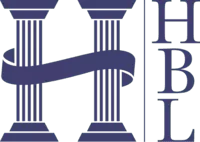Employee benefits are one of the most expensive expenditures for employers, and the rate of pharmacy benefit spending is rapidly increasing. However, employers and workers can take steps to save money, which is even more crucial with tariffs currently causing widespread uncertainty.
Digital Advances Facilitate Choice
The traditional pharmacy benefit manager (PBM) model limits consumer knowledge about prescription costs, which in turn restricts choice. However, developing digital tools for members provides instant information about drug prices, the effect of insurance on those prices, differences in prices among pharmacies, and drug alternatives. Members can use these tools at the point of care — when prescriptions are written — to make more cost-effective decisions that have financial benefits for both them and the plan.
For example, if a member is aware of less costly drug alternatives when they are at the doctor's office, the patient often will choose the alternative drugs. Understanding their options helps avoid unwanted surprises when they are paying for the prescription drugs later and increases patient satisfaction, as well.
Drug List Management Structural Improvements
Restructuring the drug list or formulary can go a long way toward reducing costs. Employers can eliminate low-value or redundant drugs, ensure that the list includes equivalent generics, and remove clinically outdated drugs. Regular updates and clinical reviews can tighten the list while still effectively providing coverage for the full range of necessary medications. Having input from a consultant can also determine when best to begin including new drugs.
Utilization Review to Correct Overspending
Rather than simply restricting certain drugs or classes of drugs, implementing precise reviews is most effective to identify the source of overspending and correct it. Using targeted prior authorizations, step therapy protocols, and similar tools can guide appropriate use and avoid unnecessary or duplicate treatments. Data-driven decisions can protect both the patient and the plan from overspending.
Responsiveness to Economic Pressure
Tariffs are impacting industries differently, but overall, general costs are rising. Employers can stay ahead of this trend by taking a more proactive approach to pharmacy benefits and adopting pharmacy benefit strategies that focus on the needs of plan participants.
The content of this article is intended to provide a general guide to the subject matter. Specialist advice should be sought about your specific circumstances.


